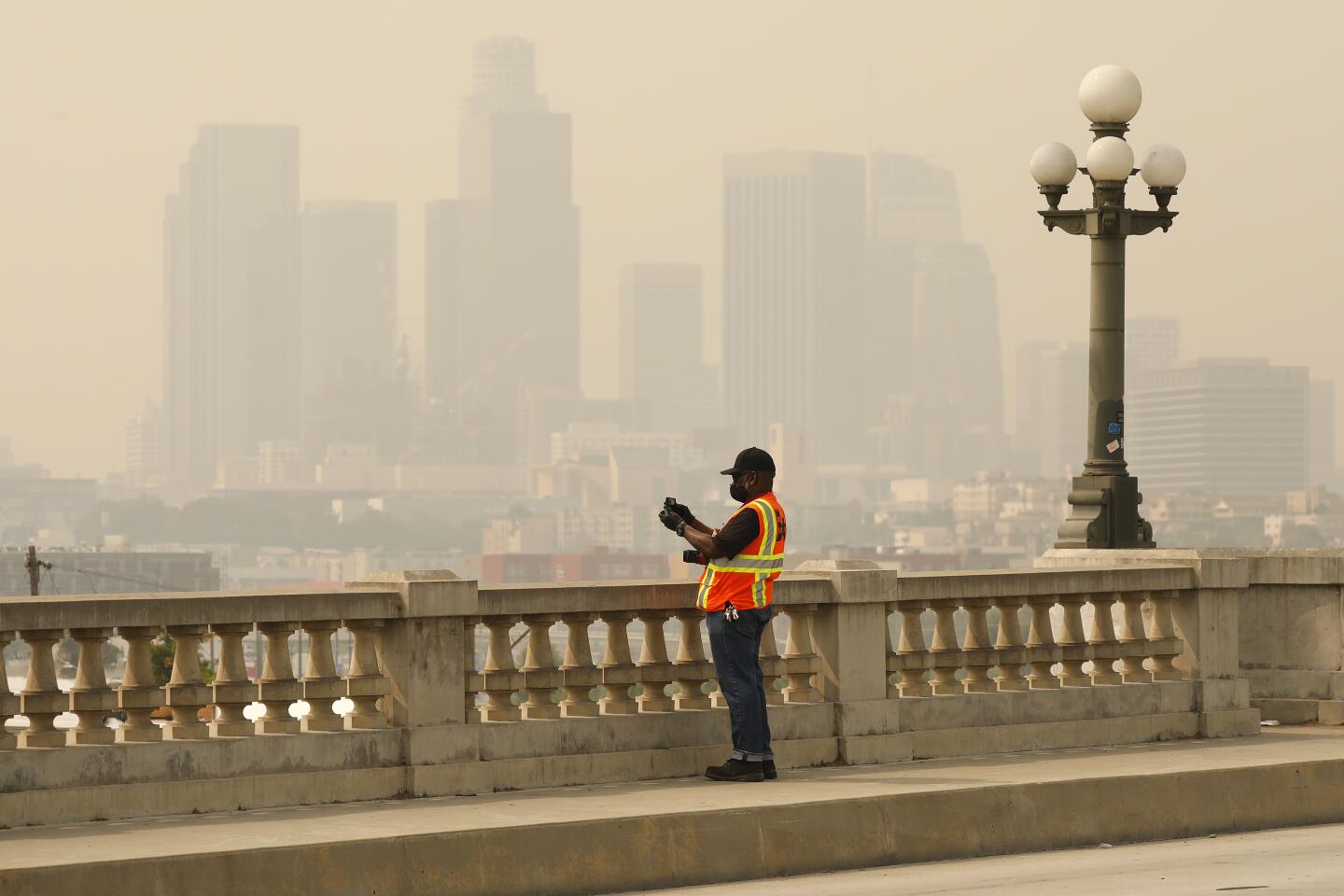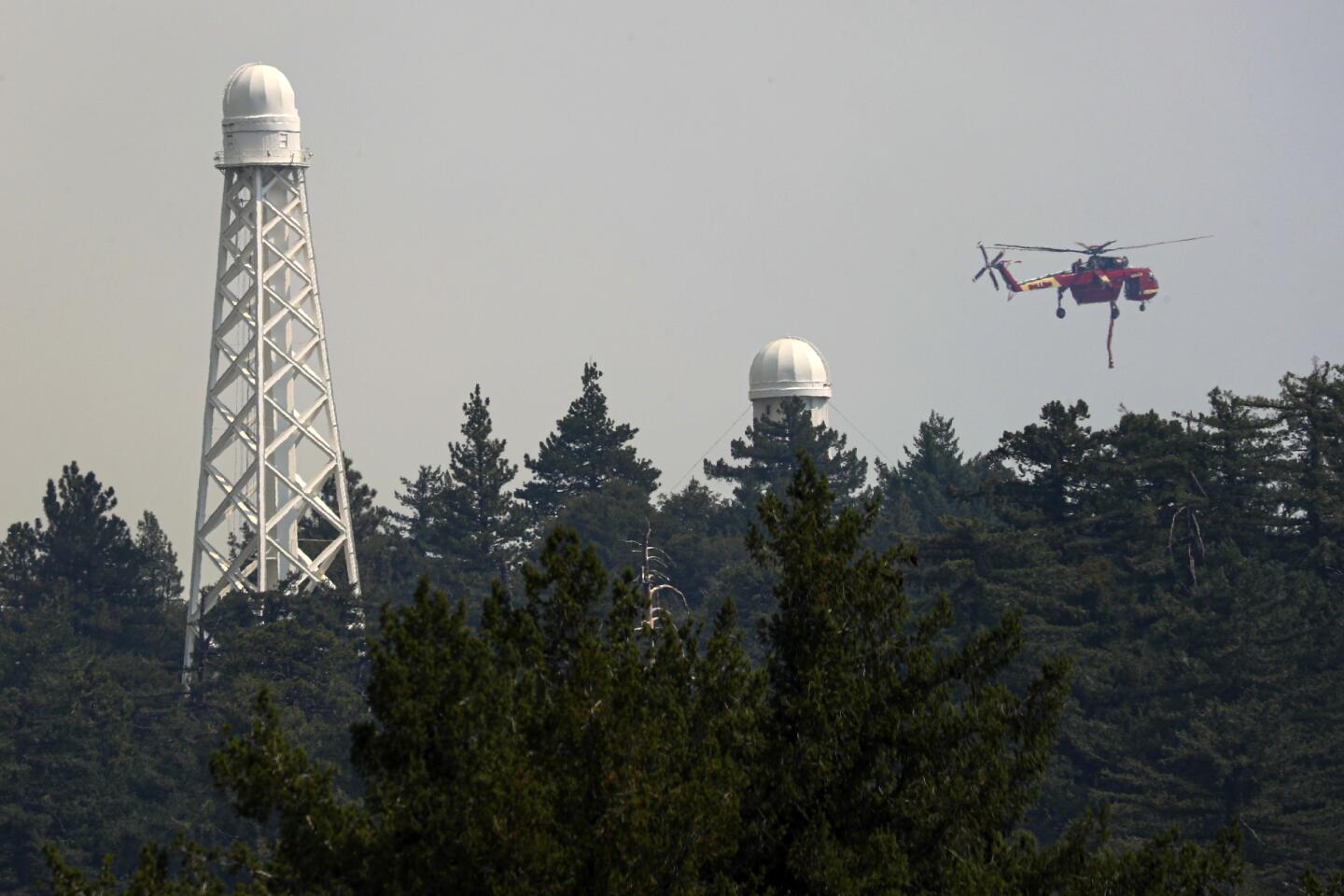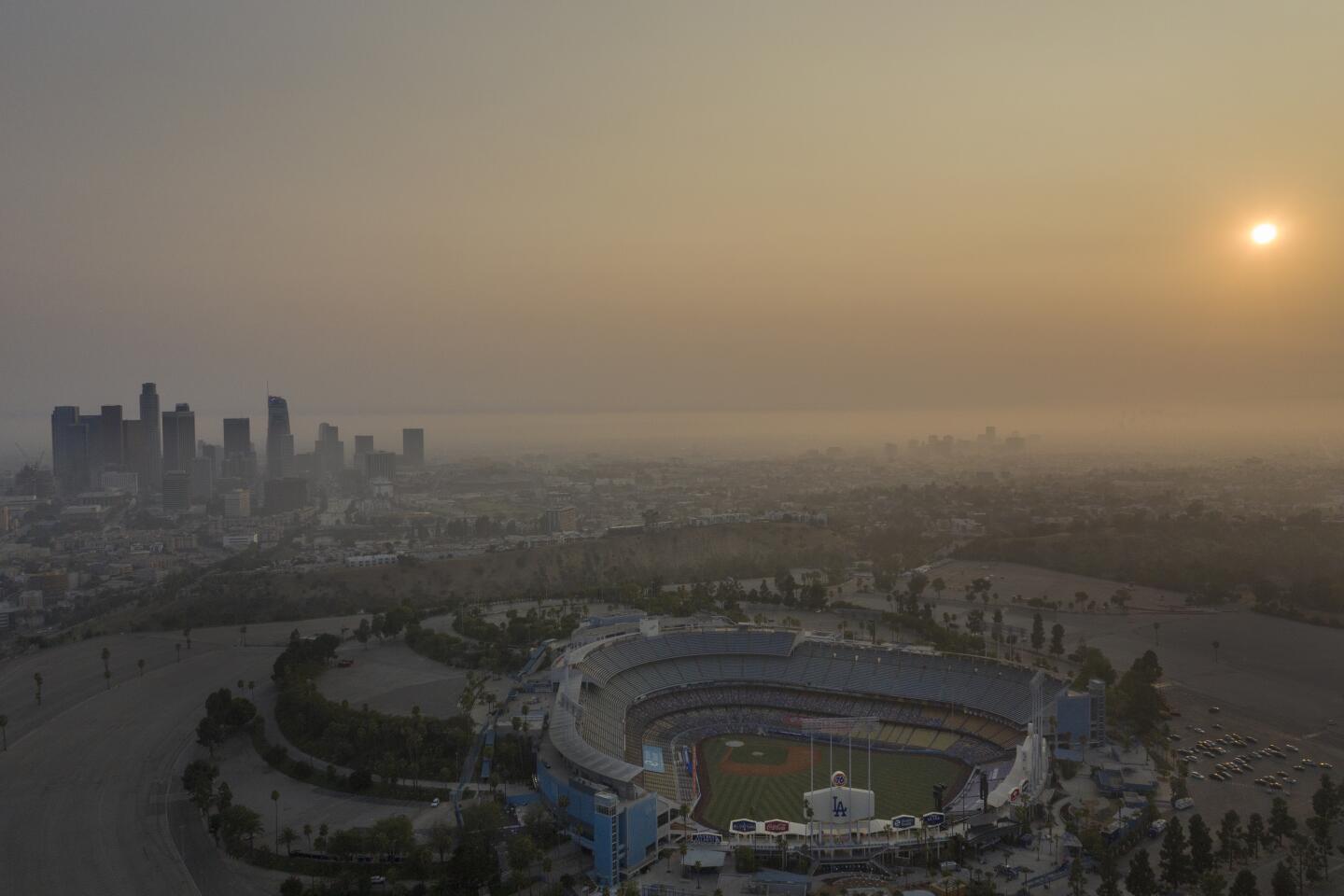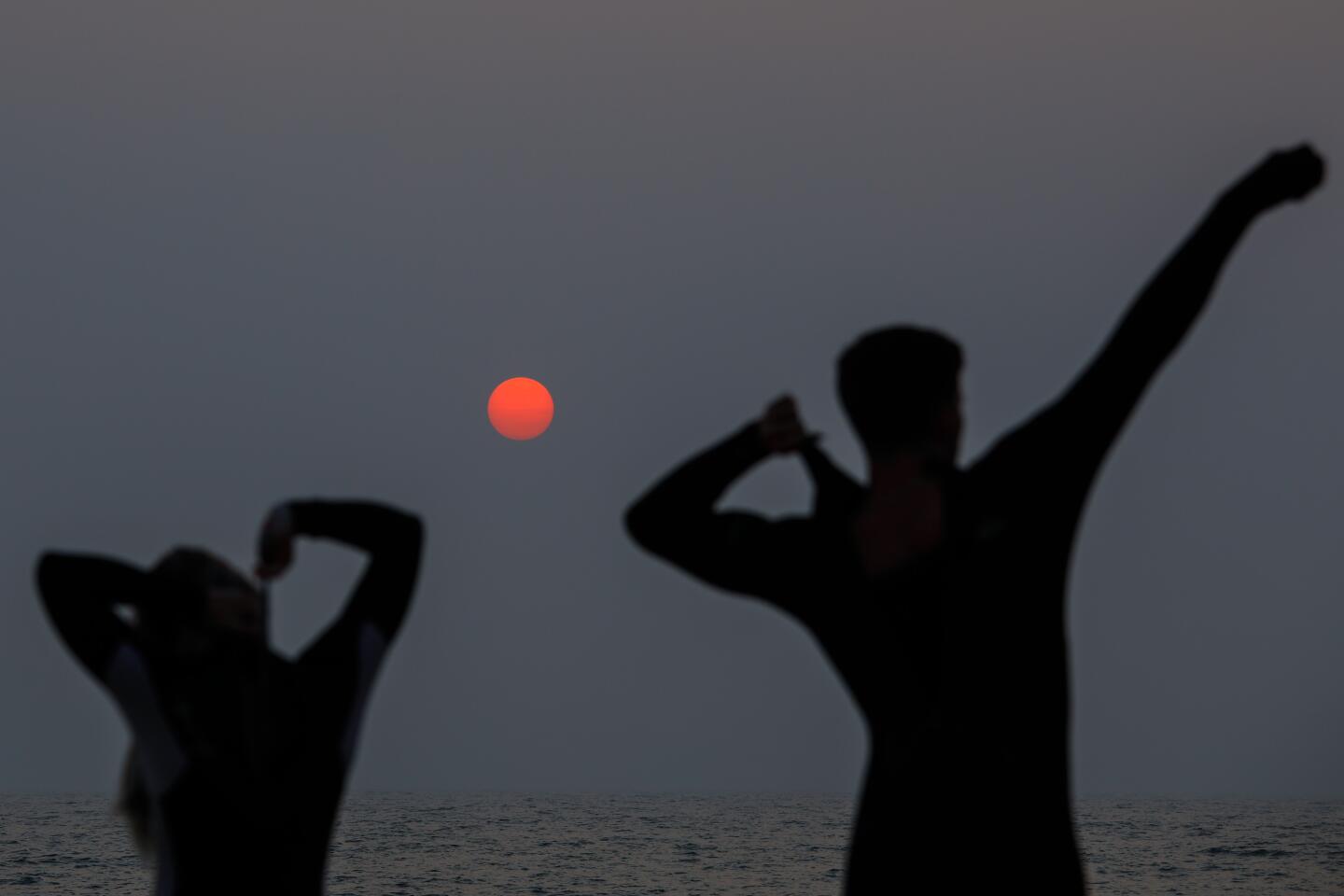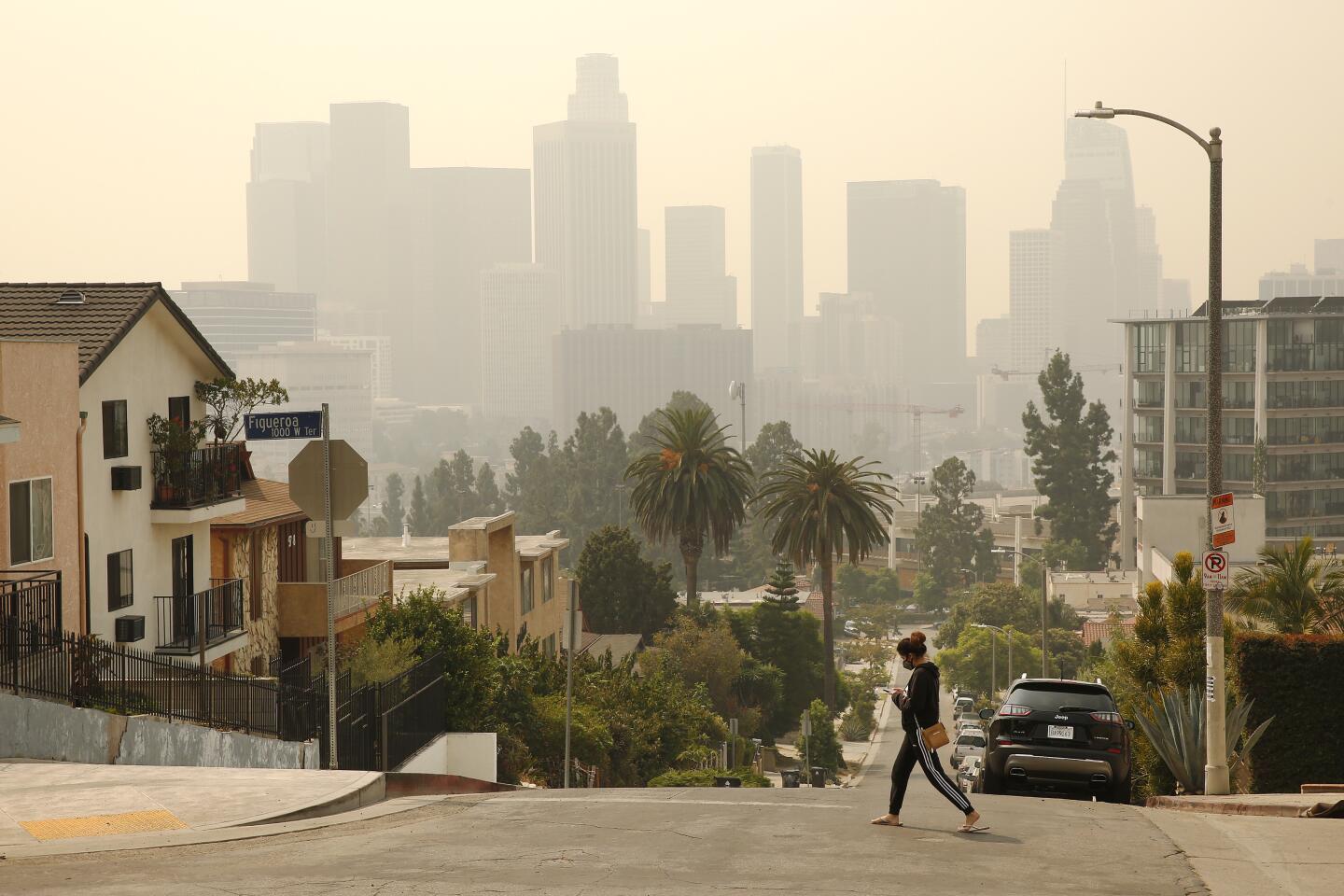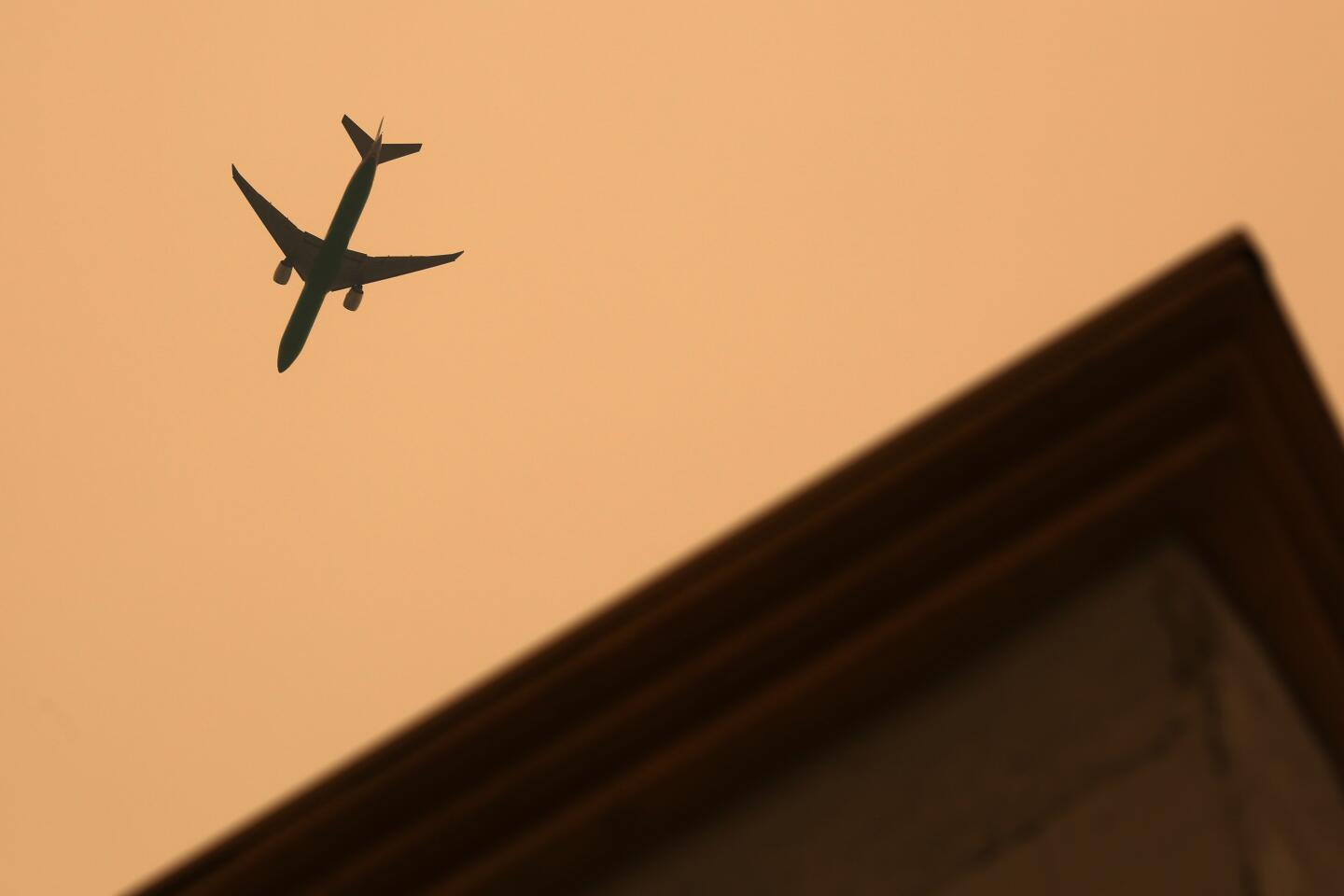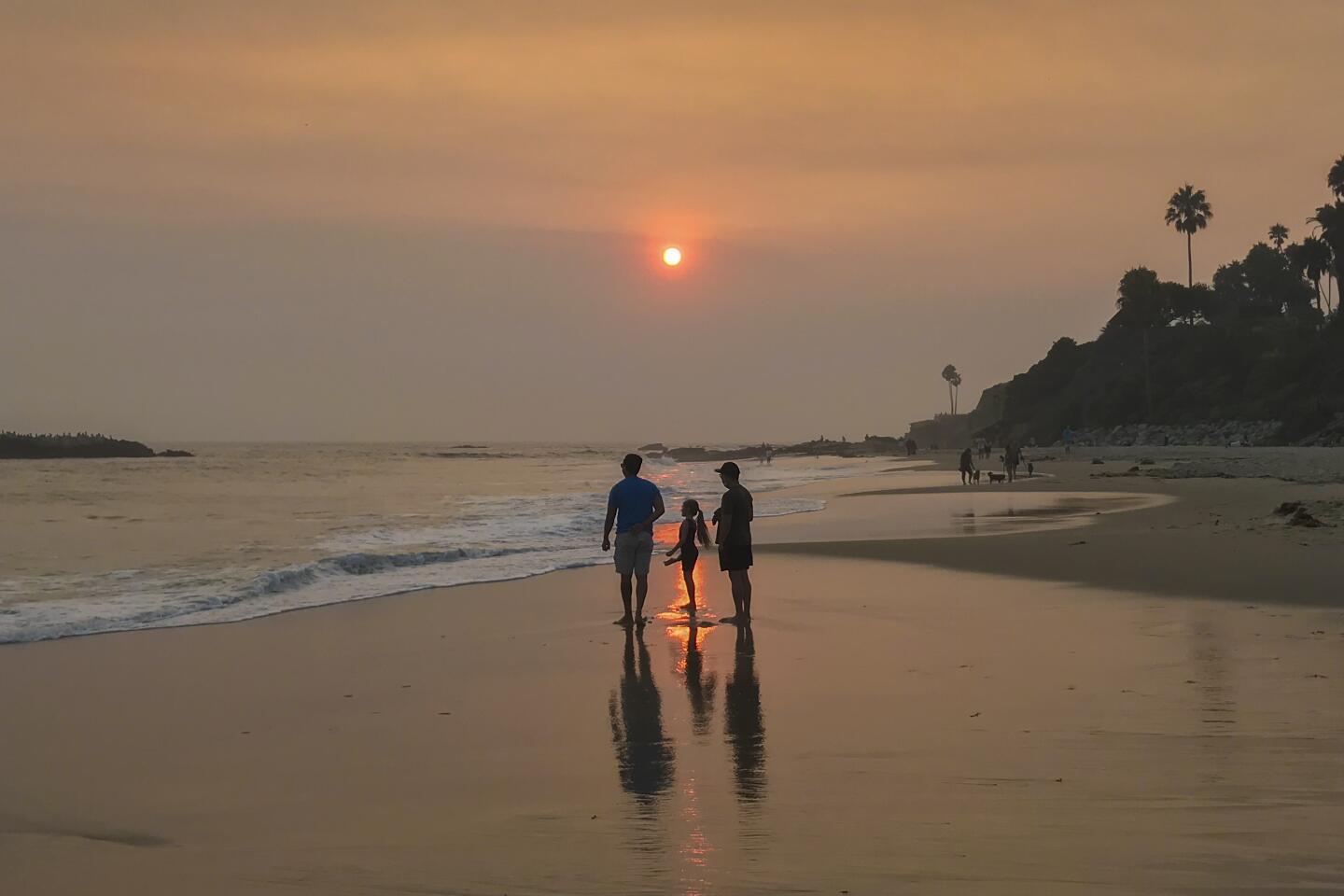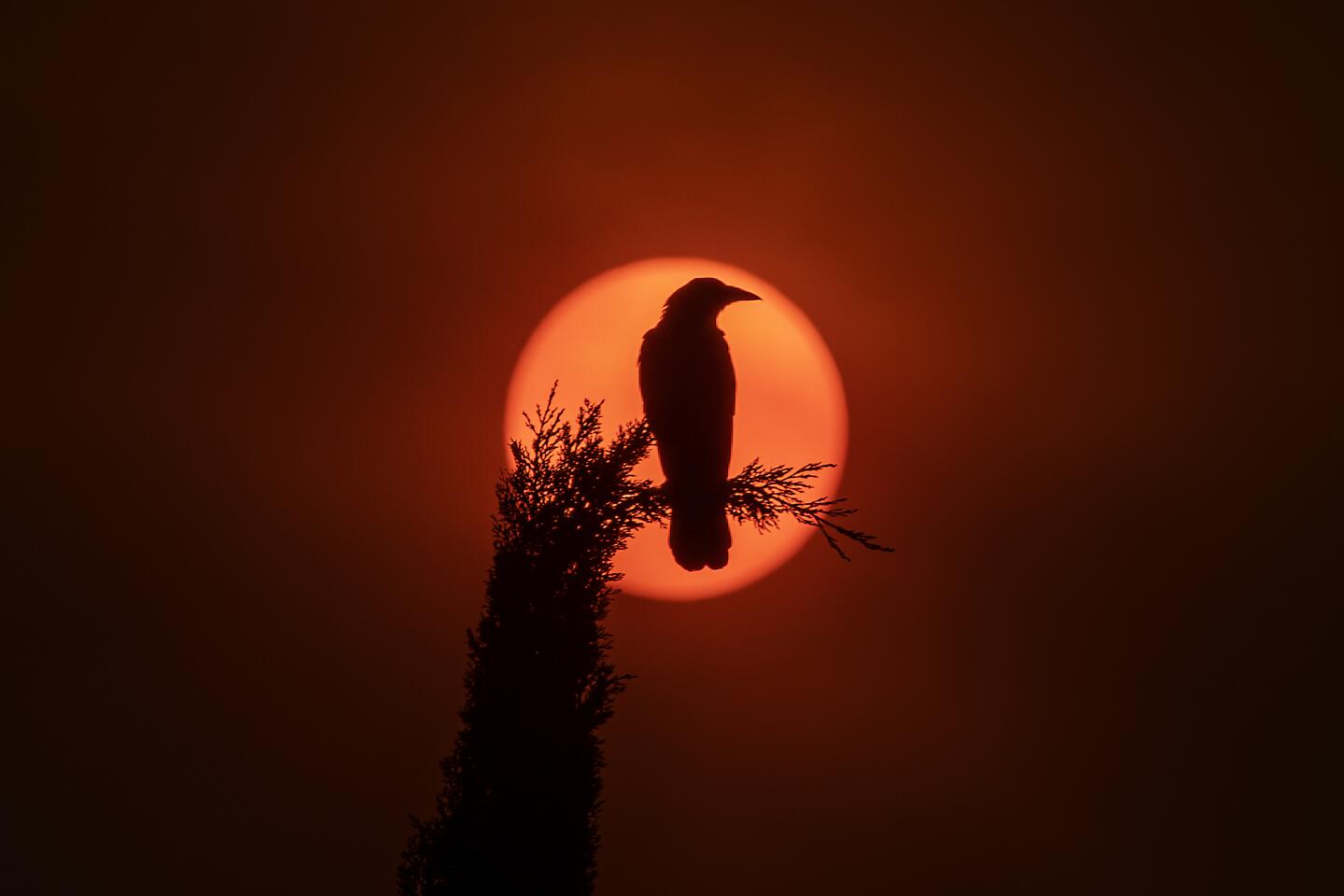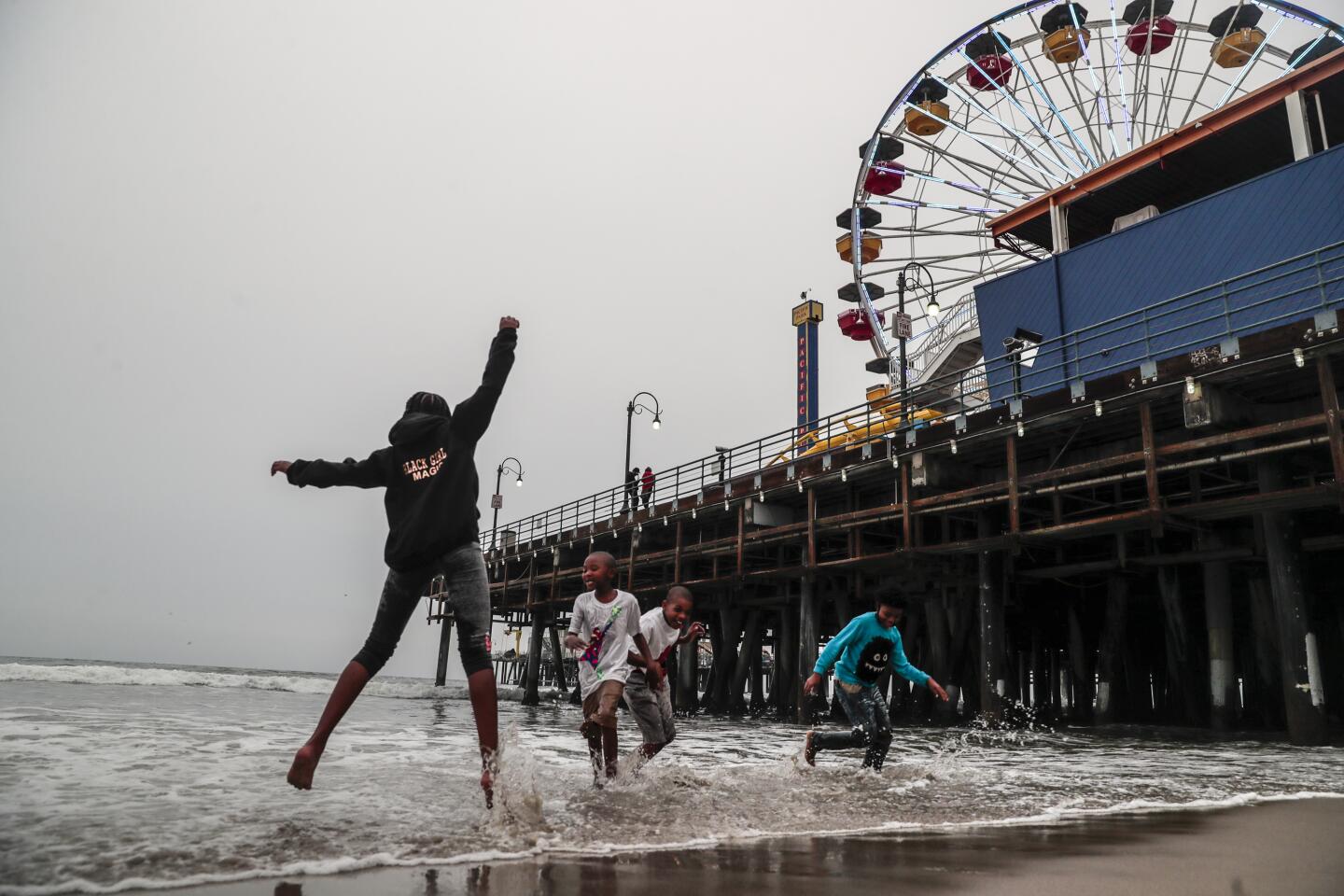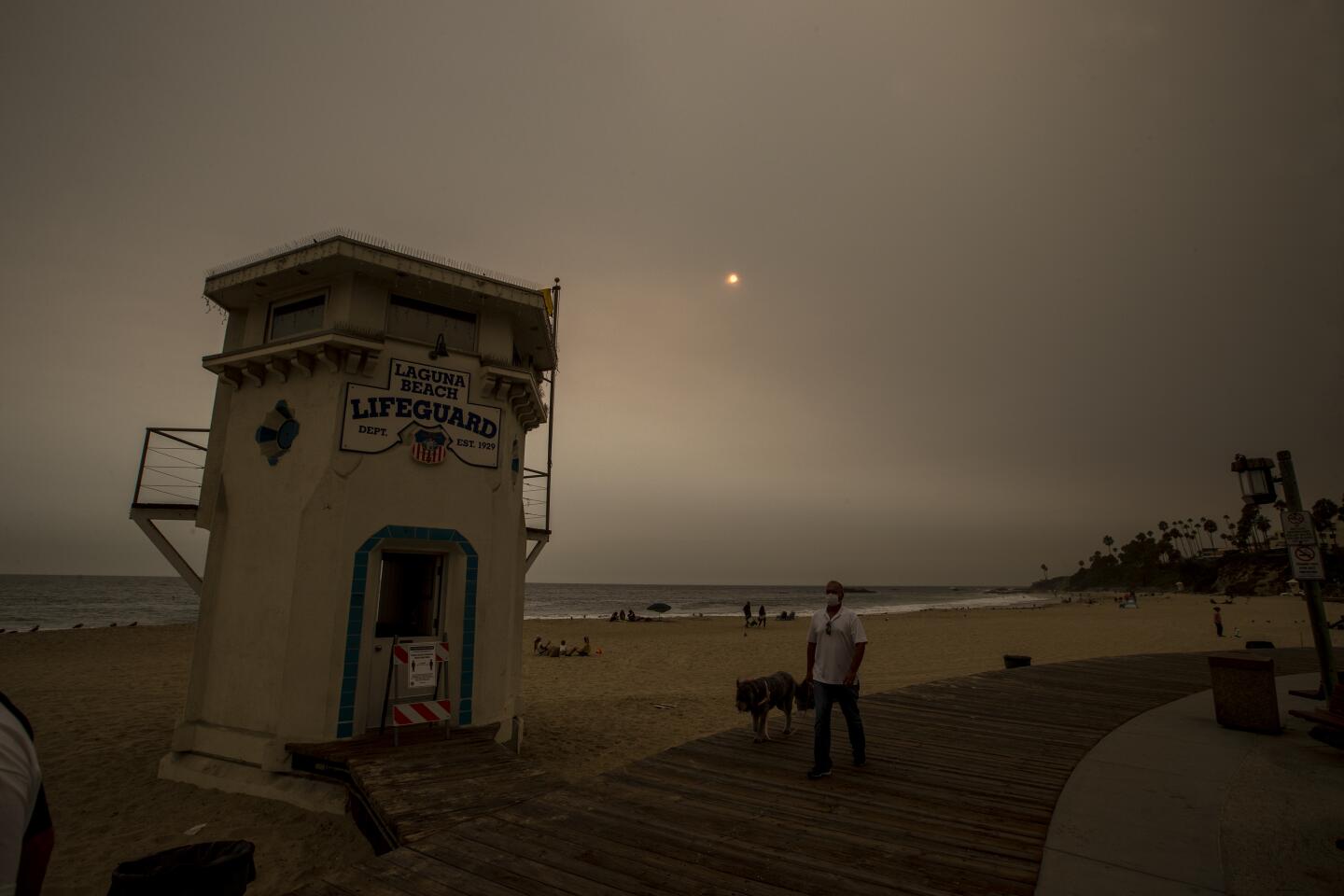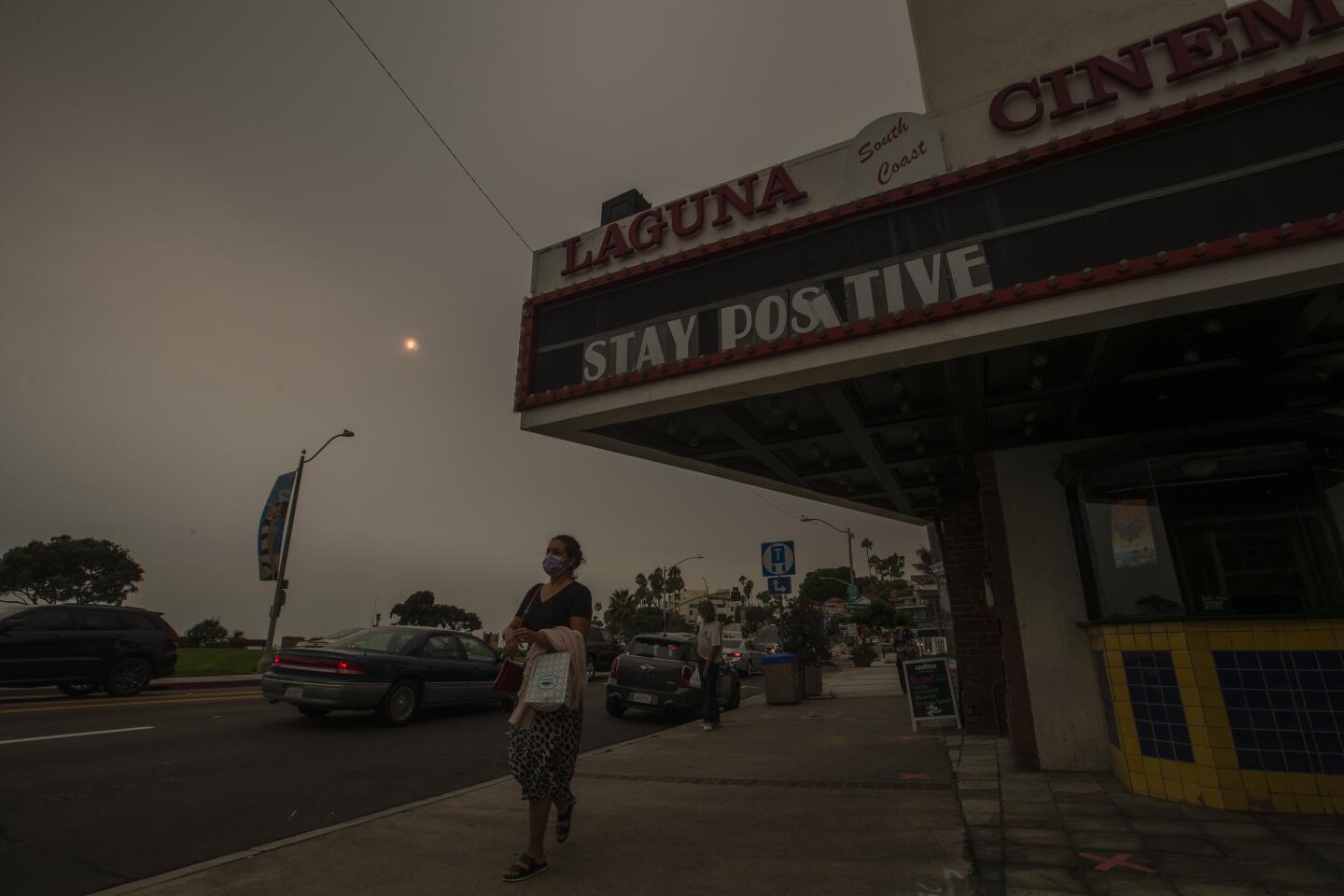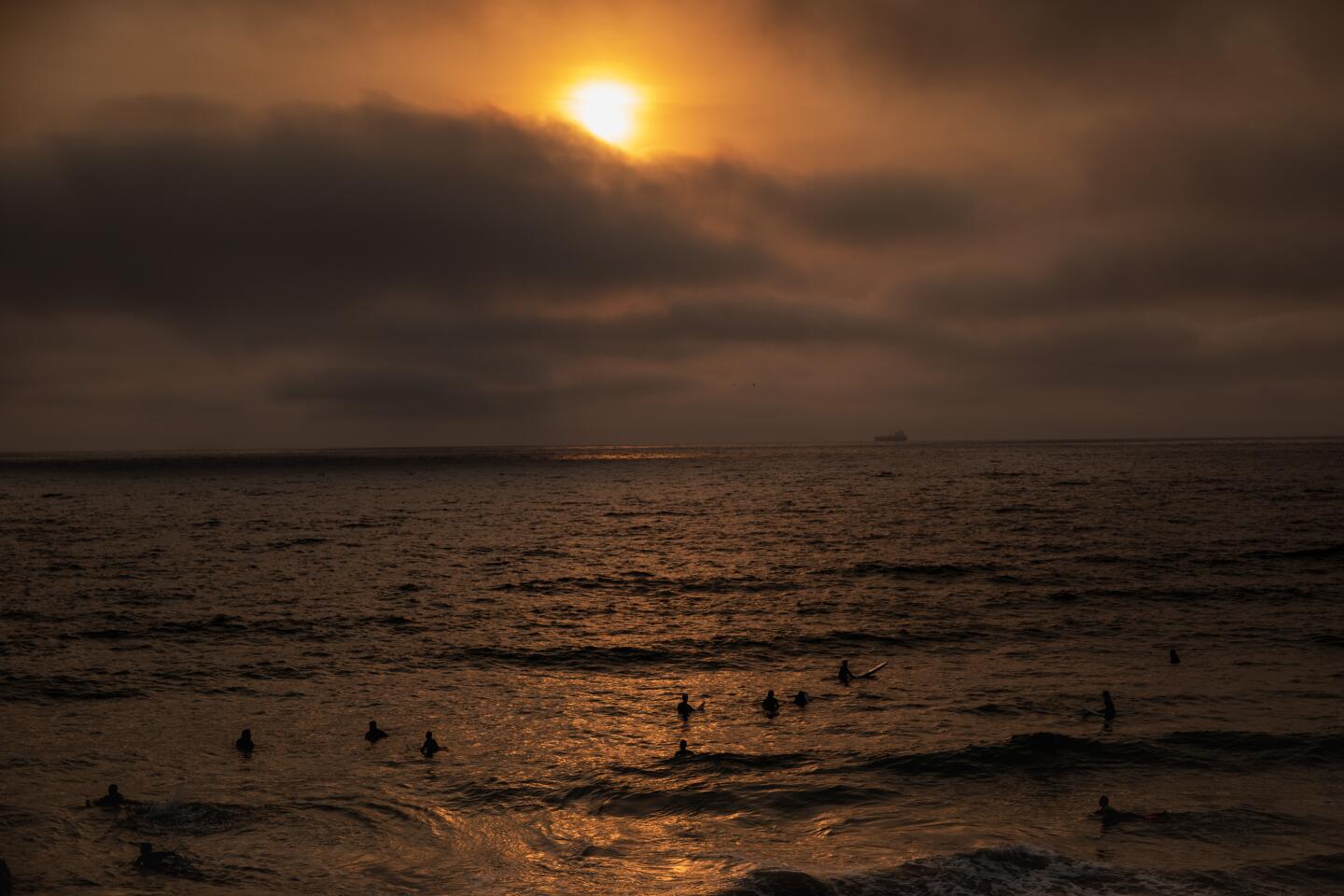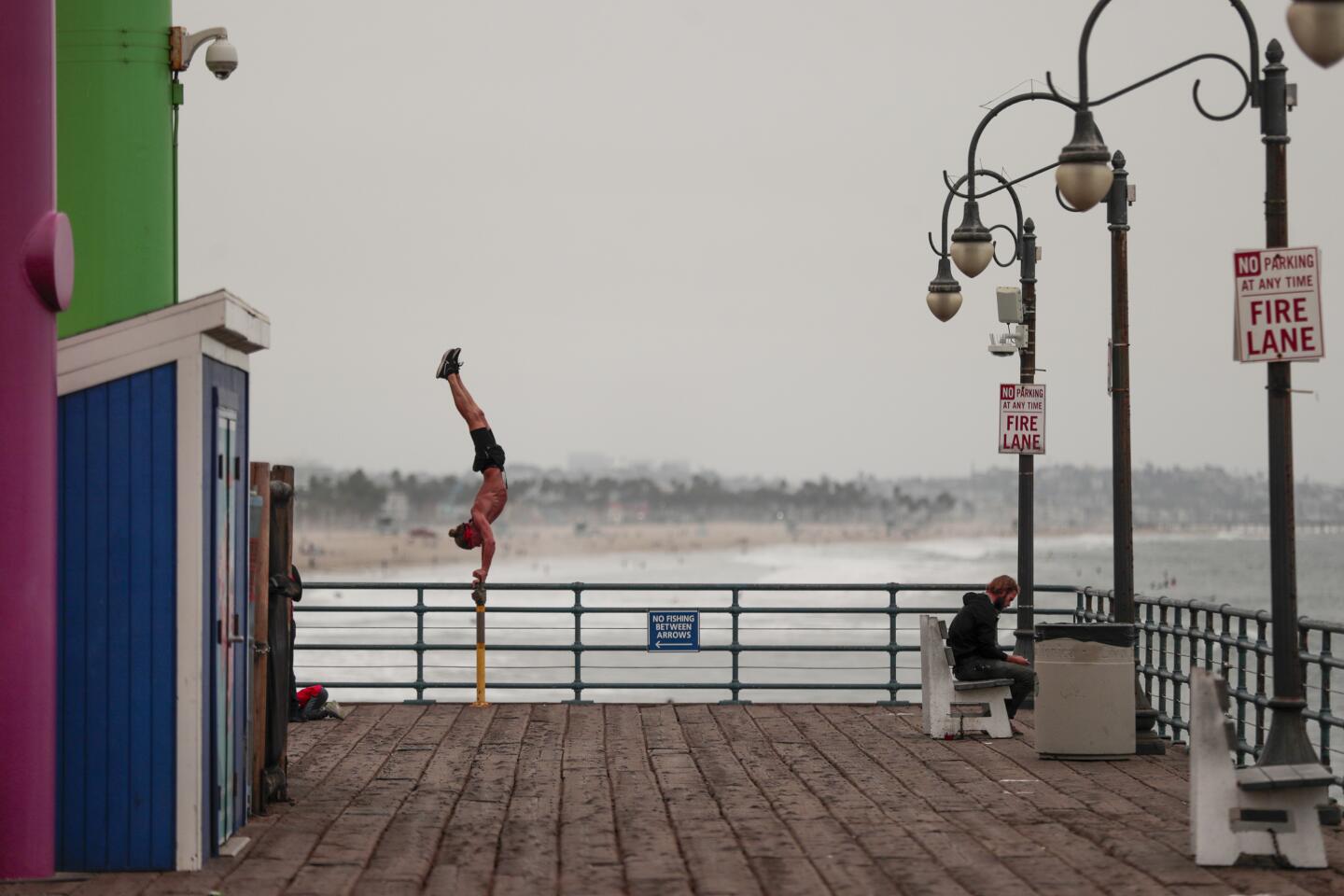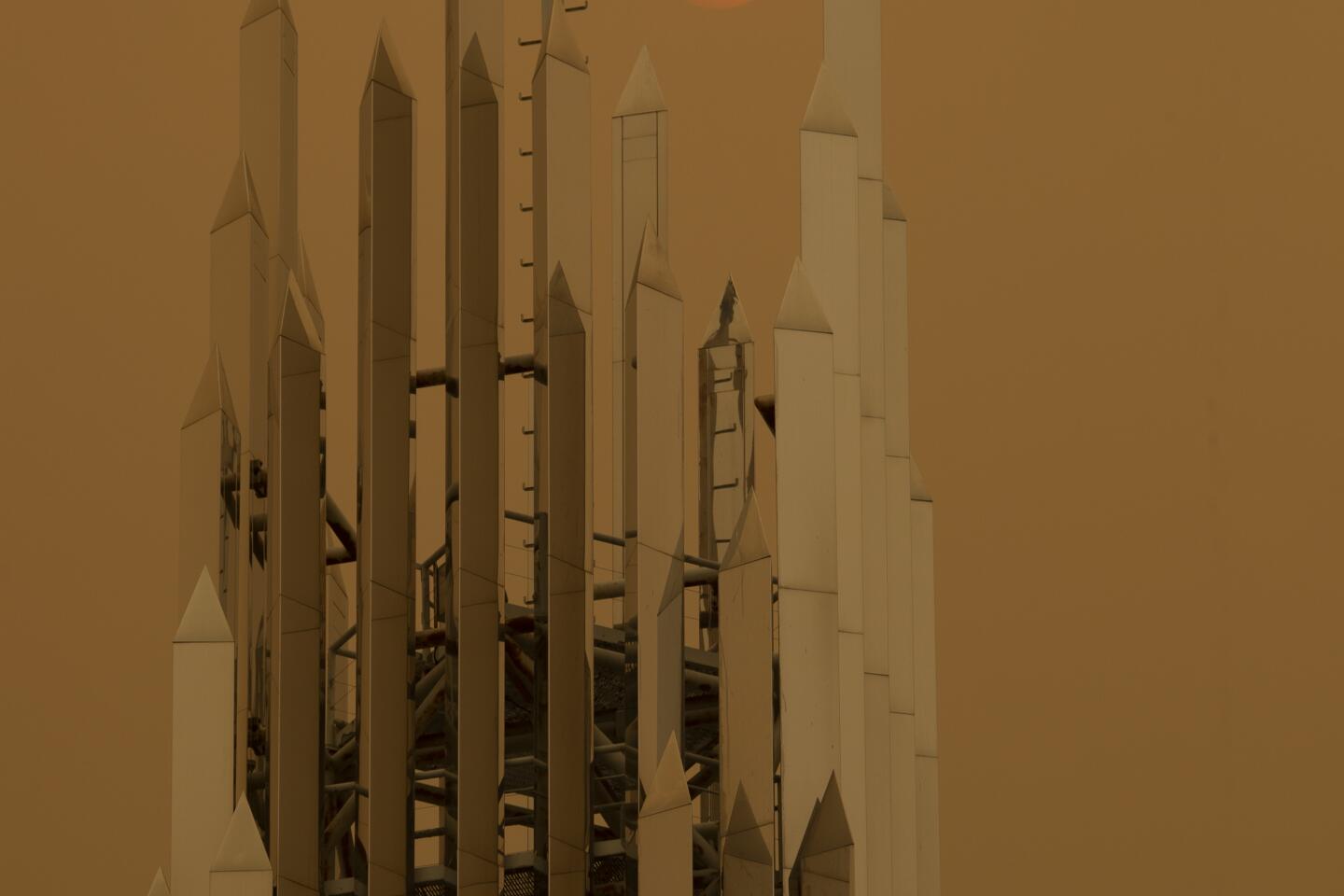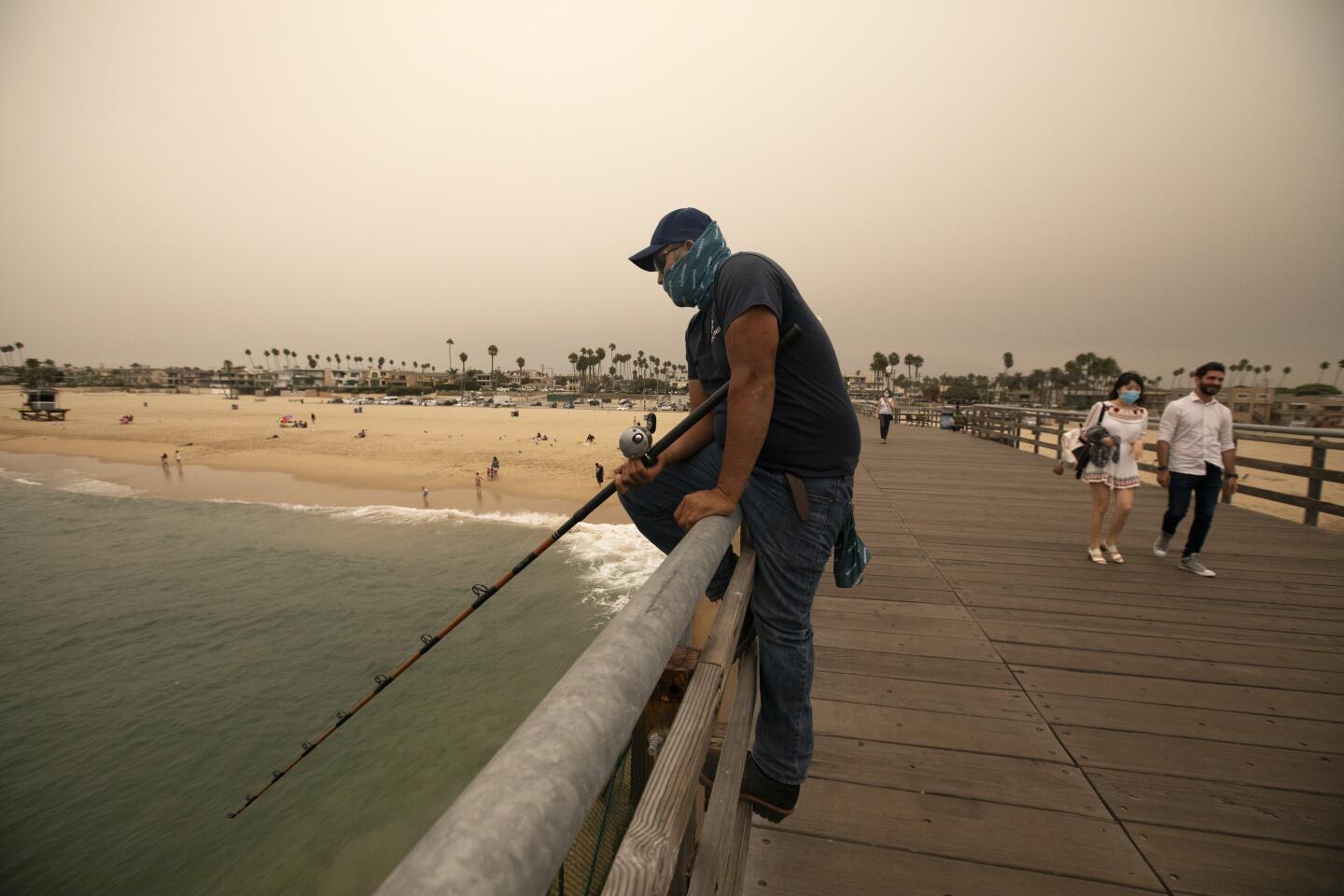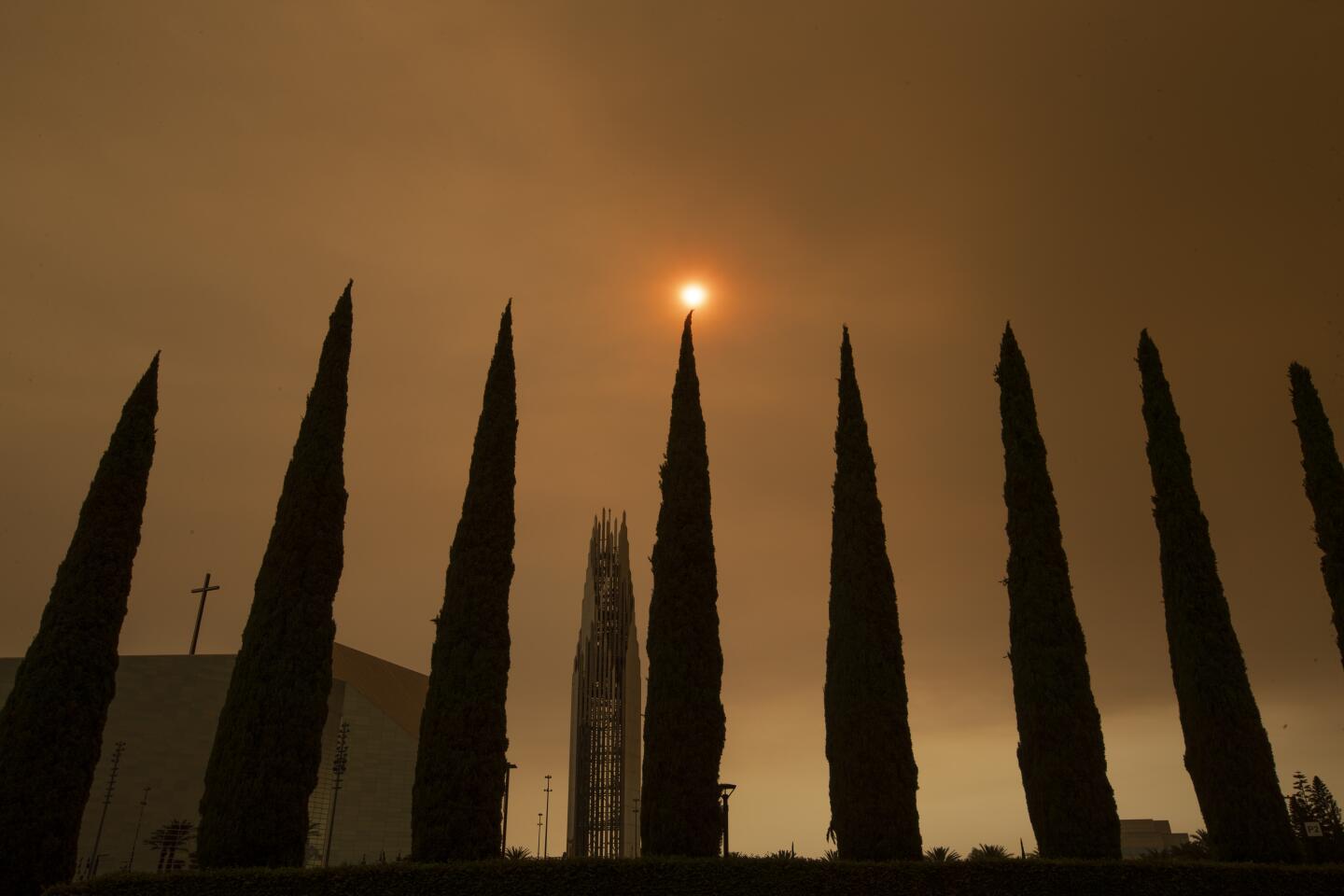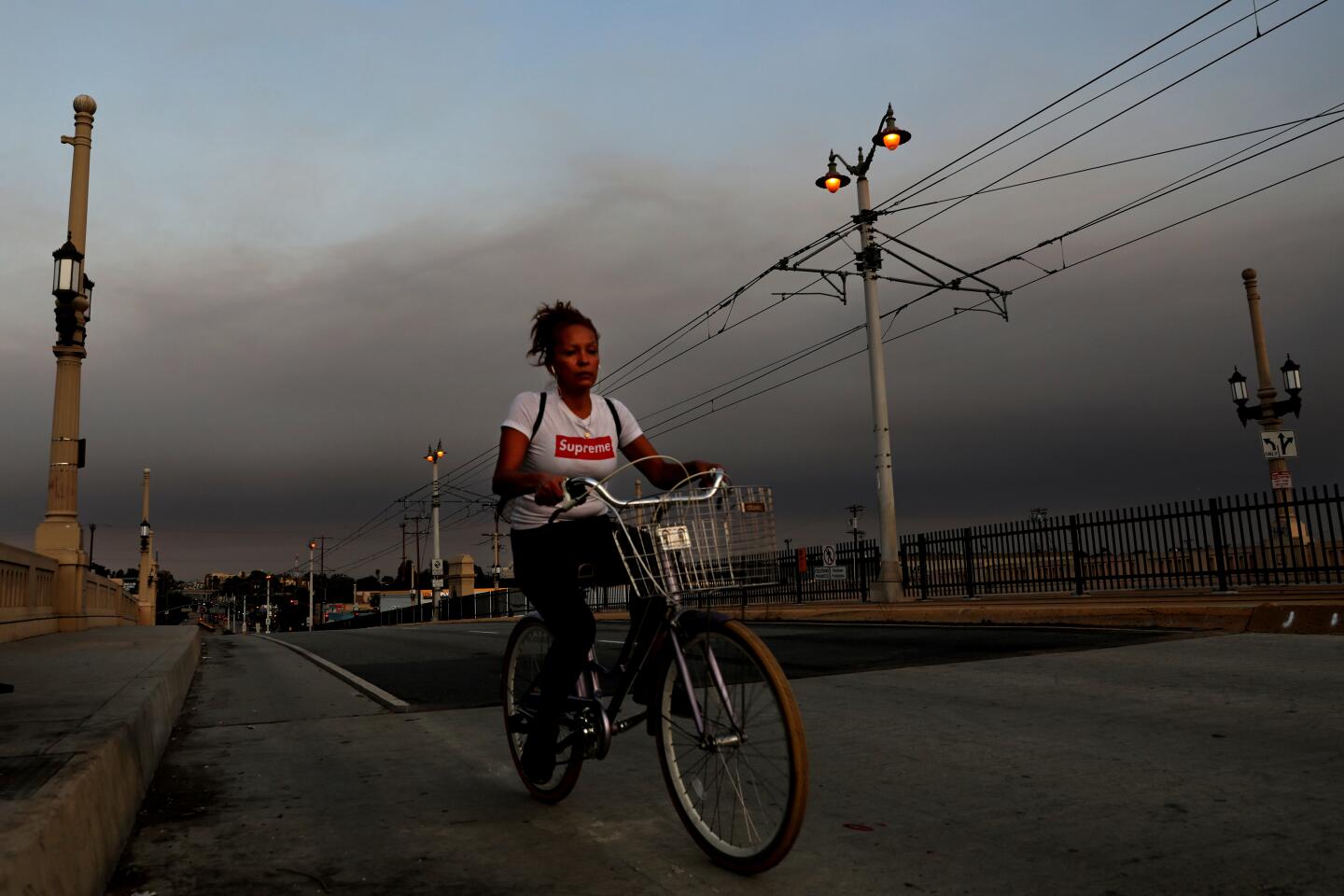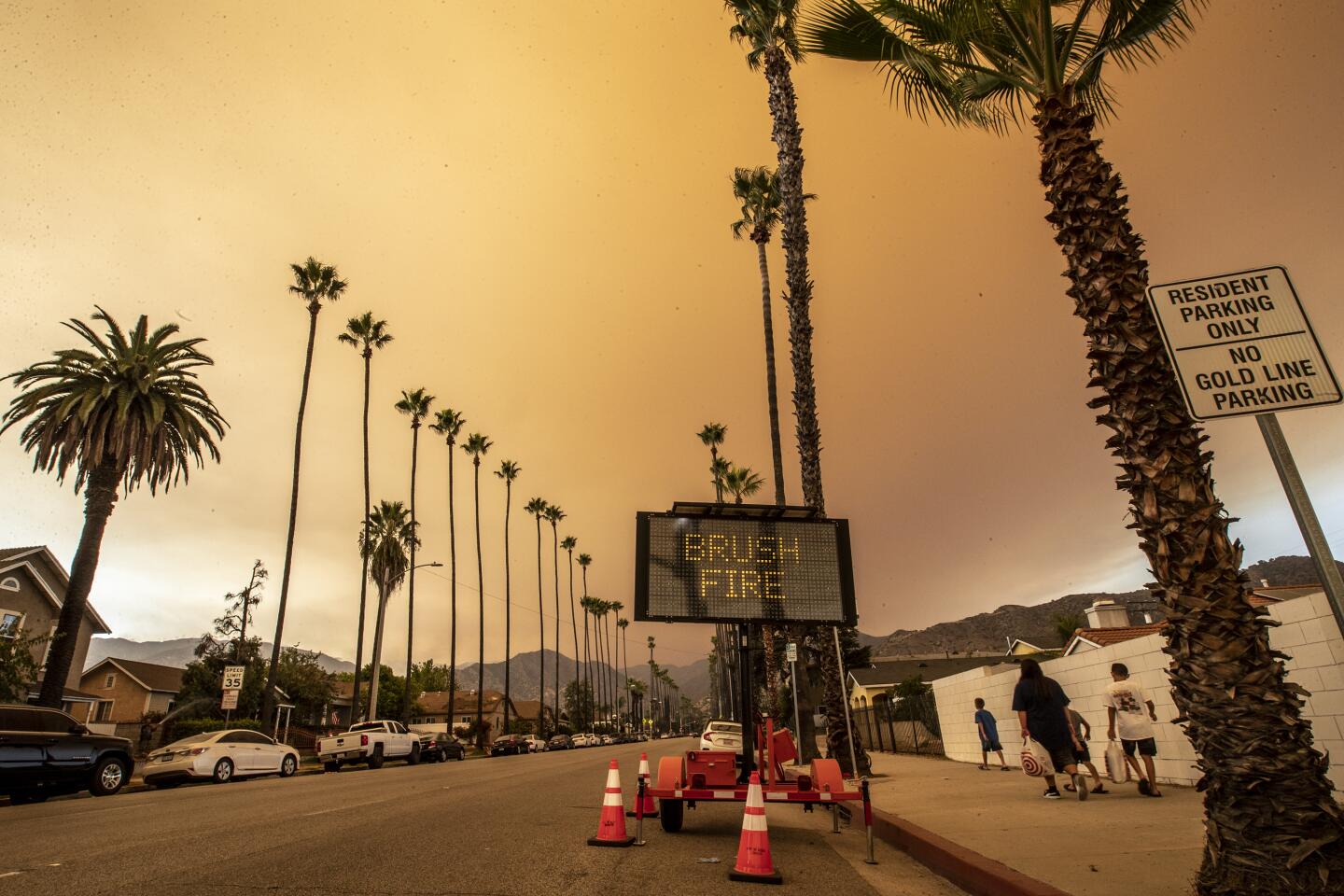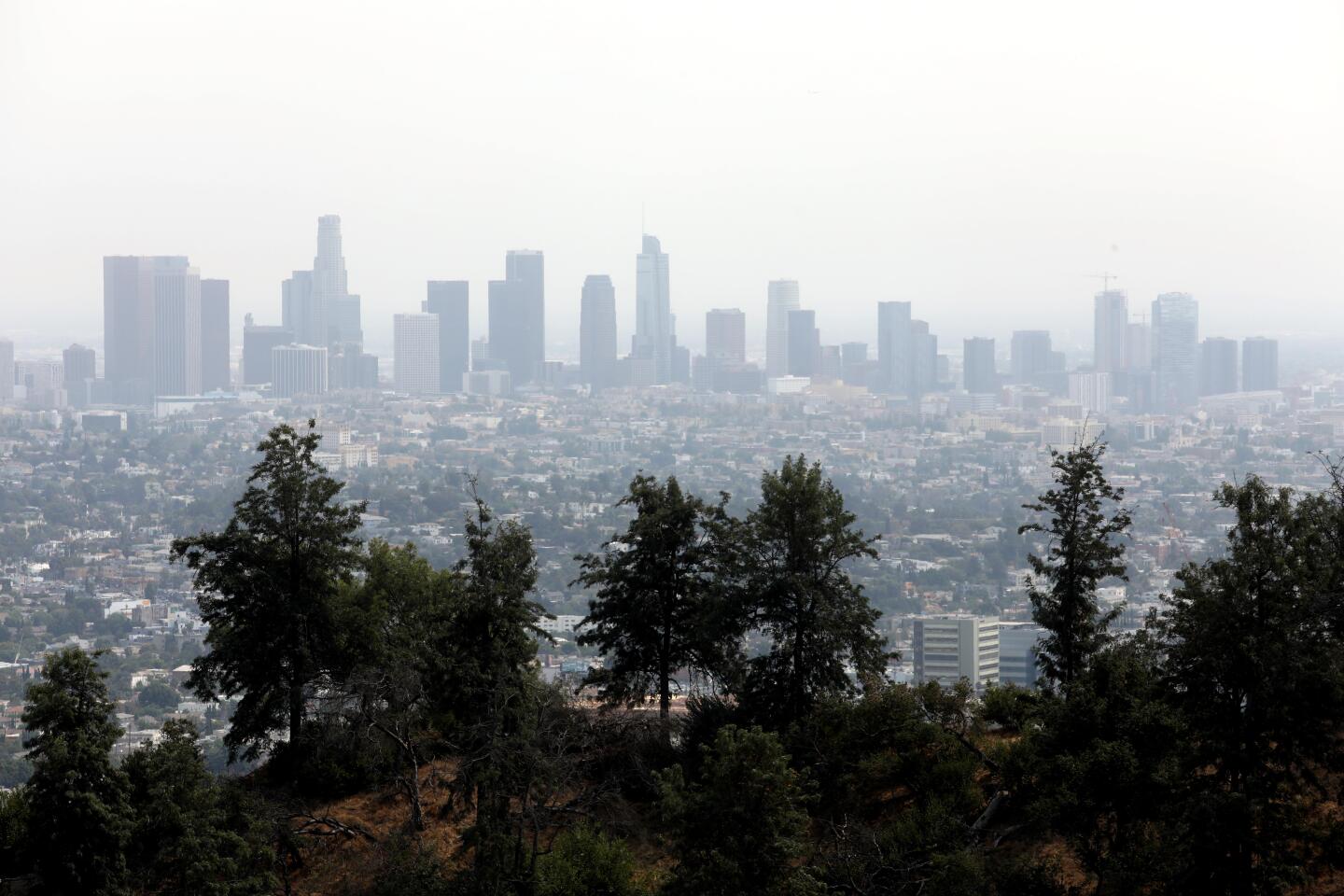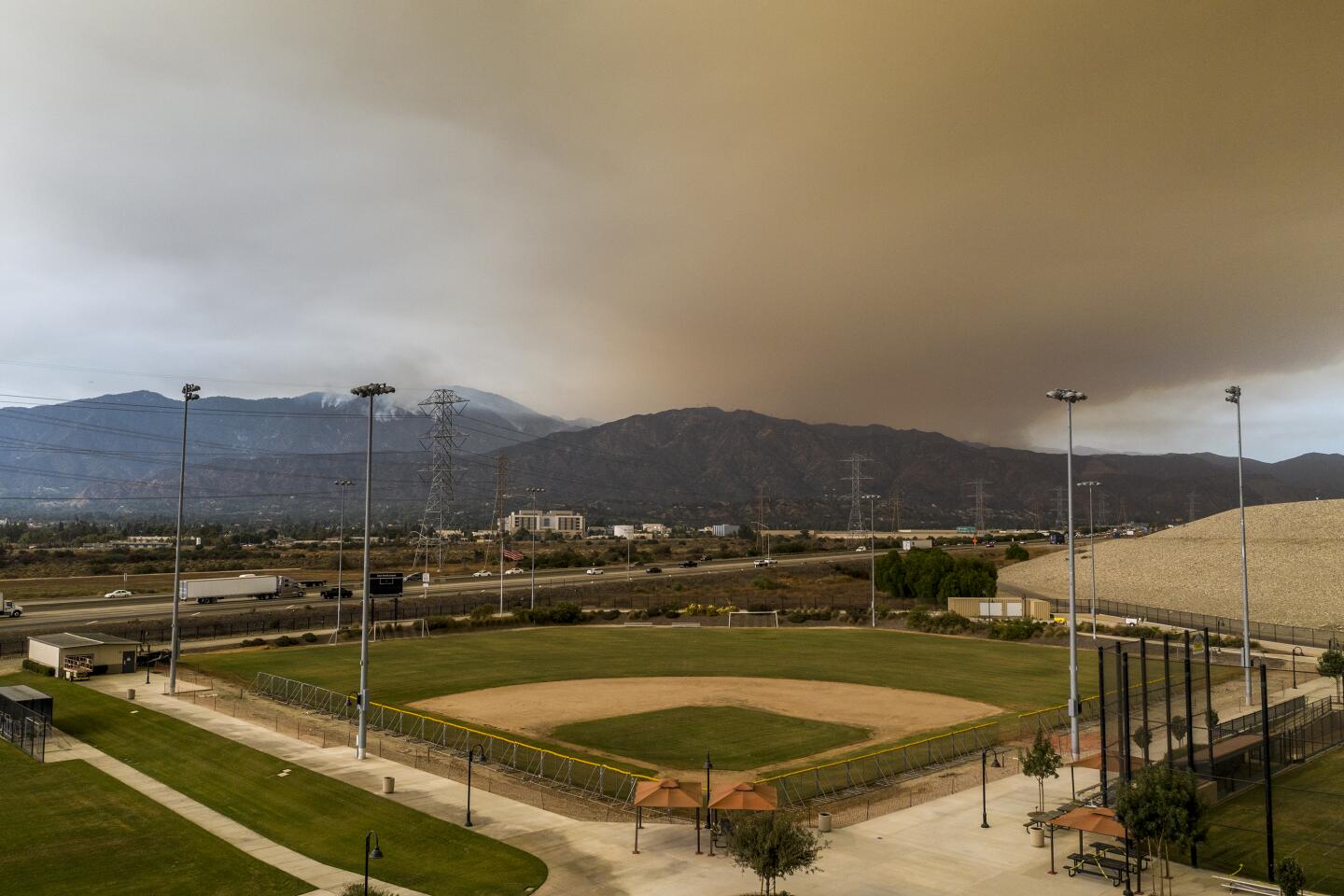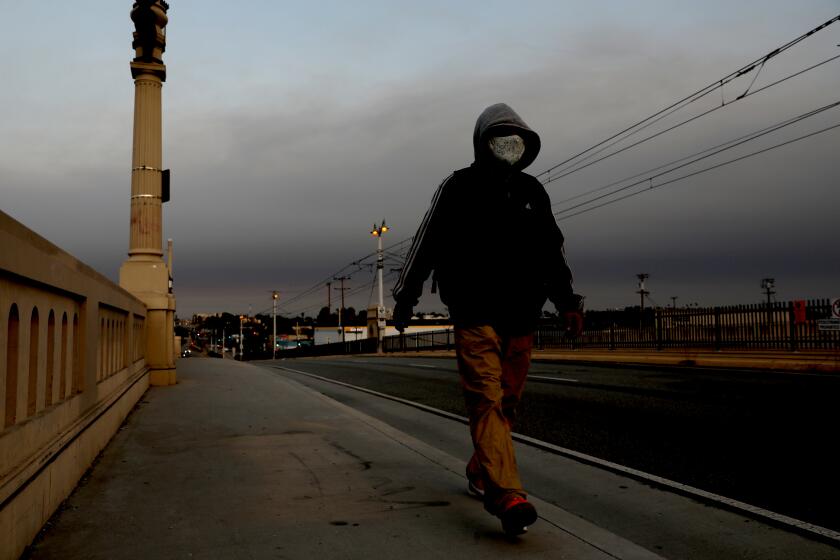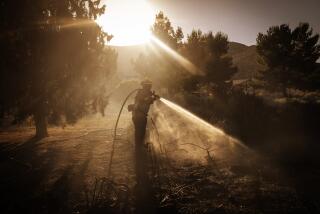Smoke from California wildfires reaches the East Coast and Europe
The wildfires that have choked California’s skies with smoke in recent weeks — littering cities with ash, wreaking havoc on regional air quality and transforming the sun into an ominous red orb — have now stretched their sooty tendrils to the other side of the country and beyond.
Plumes from deadly and record-breaking fires burning up and down the West Coast are being caught in the atmospheric jet stream and carried across the United States, according to the National Weather Service.
There is enough smoke to partially shroud the sun in parts of the East Coast, forecasters said.
“Satellite images this morning show smoke aloft moving over much of the Northeast and Mid-Atlantic,” the weather service’s Baltimore-Washington office tweeted Tuesday morning. “This smoke is obscuring the sun, and will keep temperatures a few degrees cooler today than what would be observed if the smoke was not present.”
Smoky and hazy conditions have been reported this week in New York, Boston and even Maine.
The U.S. wildfires have even become an unwelcome expatriate in Europe — with West Coast-originating smoke being reported as far away as the Netherlands and Hamburg, Germany.
The massive fires are also throwing off significant amounts of pollutants. Satellite readings taken over the last week show high-altitude concentrations of carbon monoxide that are more than 10 times above normal, according to NASA.
“The intense heat from the wildfires lofted the carbon monoxide high into the atmosphere. ... The jet stream then blew the carbon monoxide plume eastward across the U.S. and over the Atlantic Ocean,” officials wrote in a statement.
The air around Southern California feels like smoke soup because of wildfires. What does that mean for your health and daily routines?
Carbon monoxide “can persist in the atmosphere for about a month and can be transported great distances,” officials added.
“At the high altitude mapped in these images, the gas has little effect on the air we breathe; however, strong winds can carry it downwards to where it can significantly impact air quality,” the statement continued. “Carbon monoxide plays a role in both air pollution and climate change.”
The effects have been most profound, however, along the West Coast. A smoke advisory was in effect for a swath of Southern California through Tuesday afternoon, according to the South Coast Air Quality Management District, and air quality remained unhealthful for much of the state — particularly its central and northern thirds.
Thick, acrid smoke also hung over the Pacific Northwest on Tuesday from some of the largest wildfires in Oregon’s history and from blazes in Washington state, forcing many people indoors in a region known for clean air, clear water and environmental purity.
“Without question, our state has been pushed to its limits,” Oregon Gov. Kate Brown said. “The smoke blanketing the state is a constant reminder that this tragedy has not yet come to an end.”
Portland continued to have the worst air quality of any city in the world Tuesday afternoon, with an Air Quality Index of 273. As bad as that was, it had improved from the city’s all-time record of 477, set Sunday.
“This is Oregon’s prime season, when it’s normally sunny and in the 70s, and you want to be out enjoying summer,” said Harry Esteve, a spokesman for the state Department of Environmental Quality. “Instead, we’re all forced indoors.”
Downtown Portland was virtually deserted Tuesday afternoon, as dirty air hung amid stores boarded up because of protests or the coronavirus. The occasional hardy, or foolhardy, cyclist rode by.
But the region got some relief as winds turned westerly overnight Monday, pushing smoke east and producing occasional patches of clear sky Tuesday along the Oregon coast.
“We even had people tweeting us photos of blue sky, which everyone was fawning over,” said Rebecca Muessle, a National Weather Service meteorologist in Portland.
Forecasters say that a lower-pressure system moving in from the Pacific Ocean could bring rain showers, but more smoke could push north from California. Heavy rain can actually worsen smoke, much as pouring water on a campfire causes evaporation that releases a billowing white cloud, Muessle said.
“On some of the larger fires, if we see a significant amount of rain in a short amount of time, we could see a period of increased smoke,” she said.
In the Golden State, arid conditions are still expected in the near future.
“With no significant precipitation in sight, California remains dry and ripe for wildfires,” according to the state Department of Forestry and Fire Protection.
Airline says the 24-hour pause allowed employee safety measures
The devastating toll of this year’s fire season goes far beyond air quality. As of Tuesday, the recent firestorm had killed 25 people in California.
More than 3.2 million acres have burned across the state this year, the largest amount on record. The fires have also destroyed at least 4,200 structures and forced more than 60,000 people from their homes.
More to Read
Sign up for Essential California
The most important California stories and recommendations in your inbox every morning.
You may occasionally receive promotional content from the Los Angeles Times.
